Learning-by-doing: Third year
This approach is reflected in the motto adopted from the institution's inception: Learning-Doing, encapsulated in the Latin expression "Labor Omnia Vincit" (Work Conquers All).
Since its inception, Zamorano has been guided by the constructivist approach in its educational model, led by Wilson Popenoe, our first director. This theory of learning holds that our students construct knowledge through direct experiences, hands-on work, and social interaction with their environment.
The emphasis on experiential learning allows not only to acquire knowledge, but also to develop values and skills in an active way, either individually or in collaboration with others.
This approach is reflected in the motto adopted from the institution's inception: Learning-Doing, encapsulated in the Latin expression "Labor Omnia Vincit" (Work Conquers All).
A-Transversal Knowledge Modules
They are the basis for the different value chains, offered by specific departments and applied along them.
B-Value Chain Modules
They are part of the value chains and are offered by the corresponding departments according to their areas of focus.
C-Integral Modules
Value chains conclude their last step and prepare to offer and manage products in the market.
Contact us
Génesis Bautista
gbautista@zamorano.edu
cel: +504 9905-6181
Paola Andino
pandino@zamorano.edu
cel: +504 9910-8802
THIRD YEAR MODULES
Module: Poultry Unit
Description and general objective of the module:
In the module, the student learns the basic fundamentals for managing a productive chicken fattening and egg production farm, the basic concepts and the different technologies in the commercial management of a poultry farm. Additionally, the student will have the opportunity to get involved in research processes such as data and decision making to obtain efficient production of poultry meat and egg production.
At the end of the module, the student will be able to apply the basic principles of commercial management of a poultry farm, considering biosecurity measures.in production systems, to guarantee their productivity.
- Apply biosecurity measures to prevent and avoid the entry of pathogenic agents that may affect animal health and well-being through work teams committed to obtaining the best performance.
- Implement vaccination plans and work in work teams according to their application routes in birds through teamwork for the prevention and eradication of common diseases in production systems, guaranteeing their productivity.
- Identify productive activities necessary to guarantee the quality and safety of products in the production chain.
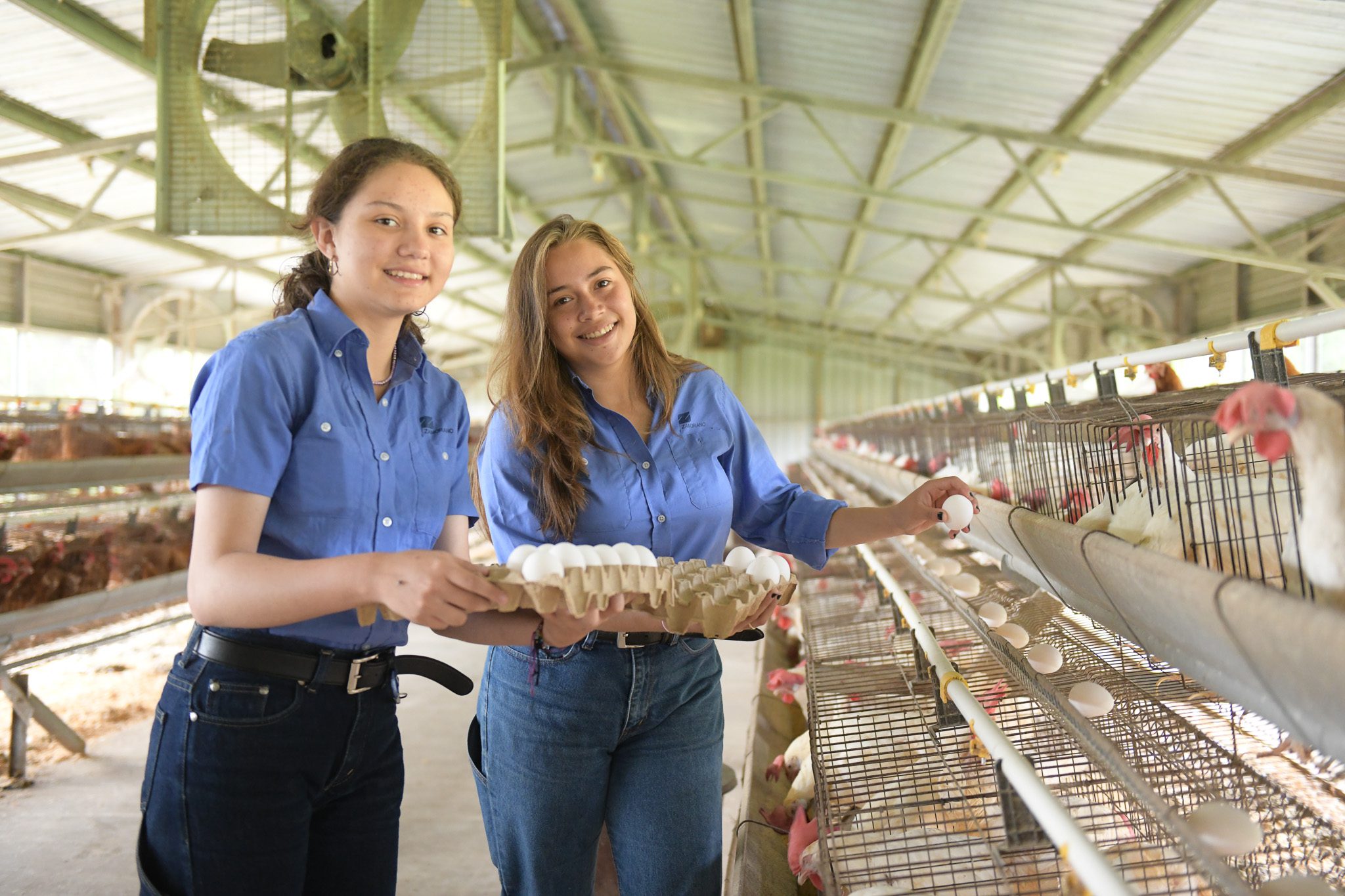
Module: Beef Cattle
Description and general objective of the module:
In this module, students have the opportunity to work in beef cattle herds, and apply basic knowledge of nutrition, reproduction, health, breed selection for their characteristics, fattening, and breeding herd management. The teaching-learning process of the module takes place in different workstations such as: dairy farm and rodeo in which students practice horse riding and corraleo; corraleostrategic supplementation where they make supplements and blocks multinutritional for livestock; and maintenance of fences and pastures where they learn to manage animals in confinement areas using conventional fences and electric fences in a rotational, rational and agroforestry grazing scheme.
At the end of the module, students acquire basic skills for managing a beef cattle herd.
- Apply basic principles of supplementation in a beef cattle herd for the optimization of nutrition in sustainable production systems.
- Identify the different breeds of cattle and their characteristics for meat production.
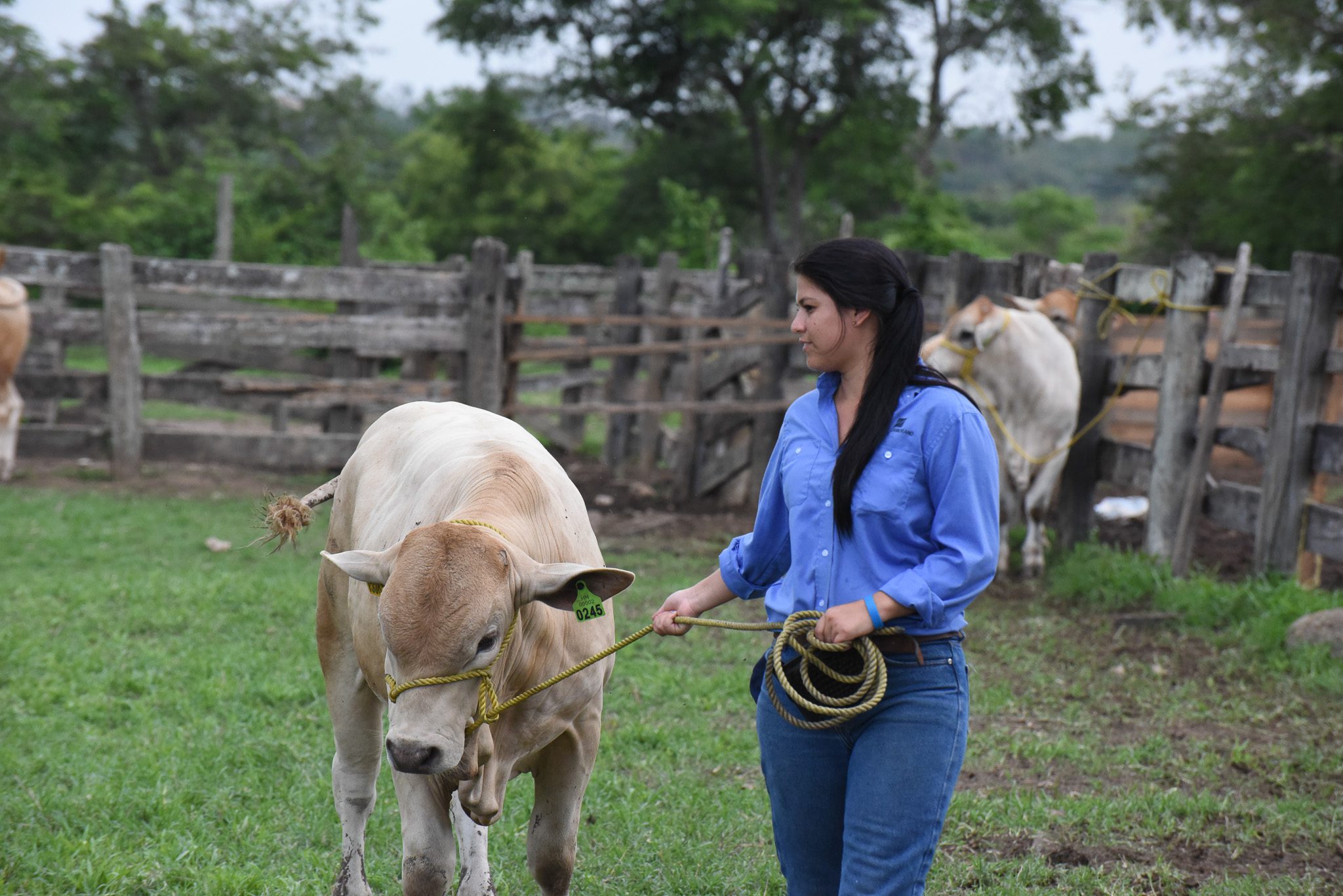
Module: Replacement Management (Calves and Heifers)
Description and general objective of the module:
In this module students learnthe application ofartificial rearing procedures for calves using management, nutrition, reproduction and animal health criteria. The student carries out practices in all phases of artificial rearing of a calf until its last third of gestation, to be transferred to the milking section where its productive cycle begins. The module is divided into two subsections:calves and heifers.
Upon completion of the module, the student acquires comprehensive competencies in the efficient management of dairy cattle production, management of the newborn and care of replacement calves, as well as the implementation of feeding and management practices that guarantee the optimal development and reproductive maturity of the heifers, thus contributing to obtaining of animals of high genetic an d productive value on the dairy farm.
- Know the techniques for bovine identification throug hearringand tattoos necessary for managing dairy farm records.
- Understand management of the newborn by applying techniques such as: colostrum feeding, navel healing, registration and application of medications, dehornand measurement of colostrum quality by means of colostrometerto guarantee adequate development of replacement calves and obtain high-value animals.
- Implement adequate feeding and management of the heifer in the rearing phase to achieve adequate daily weight gains and reproductive maturity.
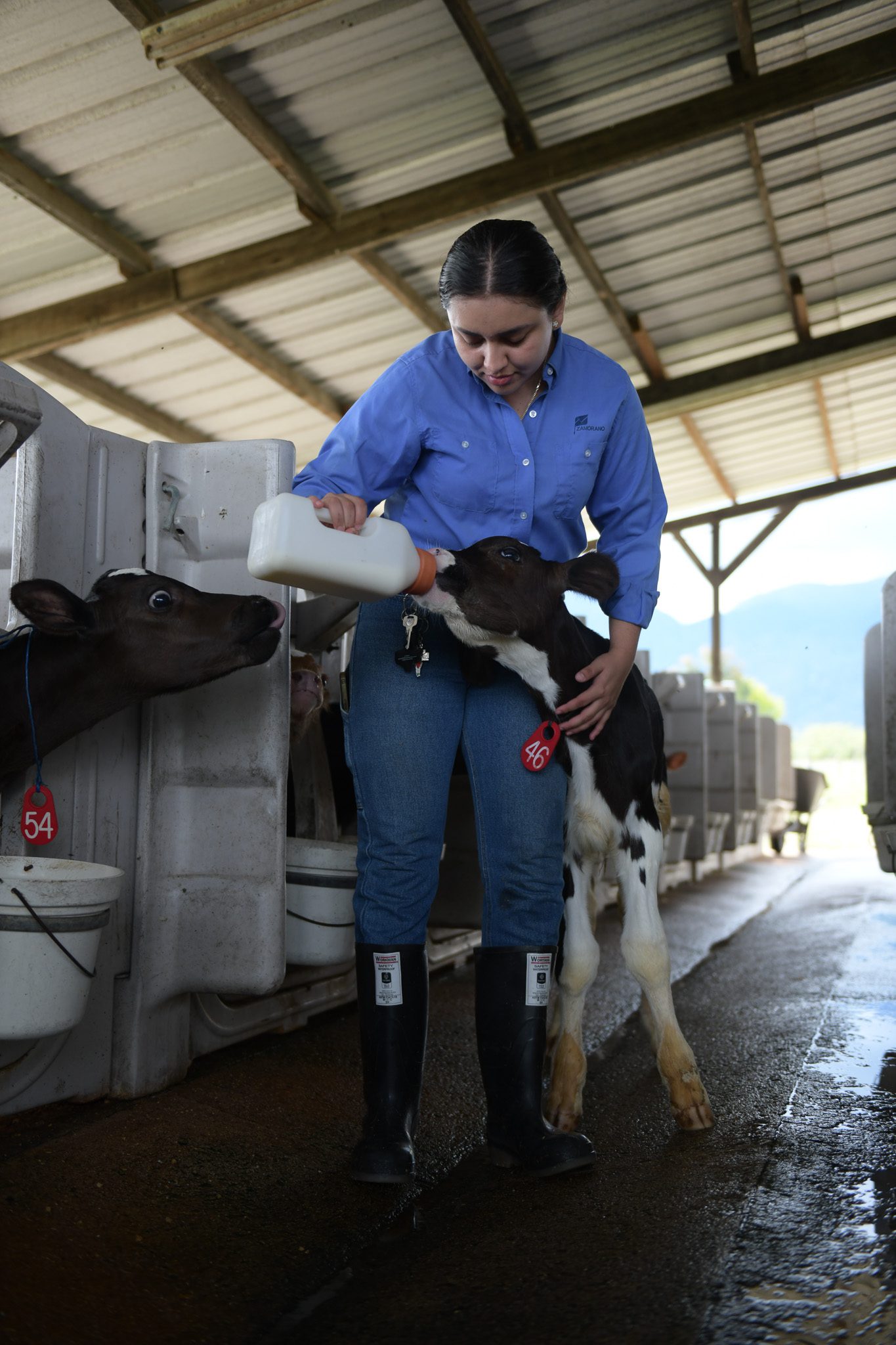
Module: Agricultural Administration
Description and general objective of the module:
In the module the student strengthens, integrates and applies administrative concepts, develops criteria and skills for agricultural administration, especially for planning and control. The module provides students with the tools to acquire the necessary skills to effectively plan and control livestock farms, with special attention to cattle. Students learn to use advanced techniques for strategic and operational planning of activities related to bovine production.
At the end of the module, the student will be able to use biometric data sheets to project livestock herds, using software related to technical record systems, ration formulation and global positioning systems as tools to develop the functions of an agricultural administrator.
- Use techniques for planning livestock farms with emphasis on cattle.
- Analyze control techniques for livestock farms through the use of technical records for their implementation.
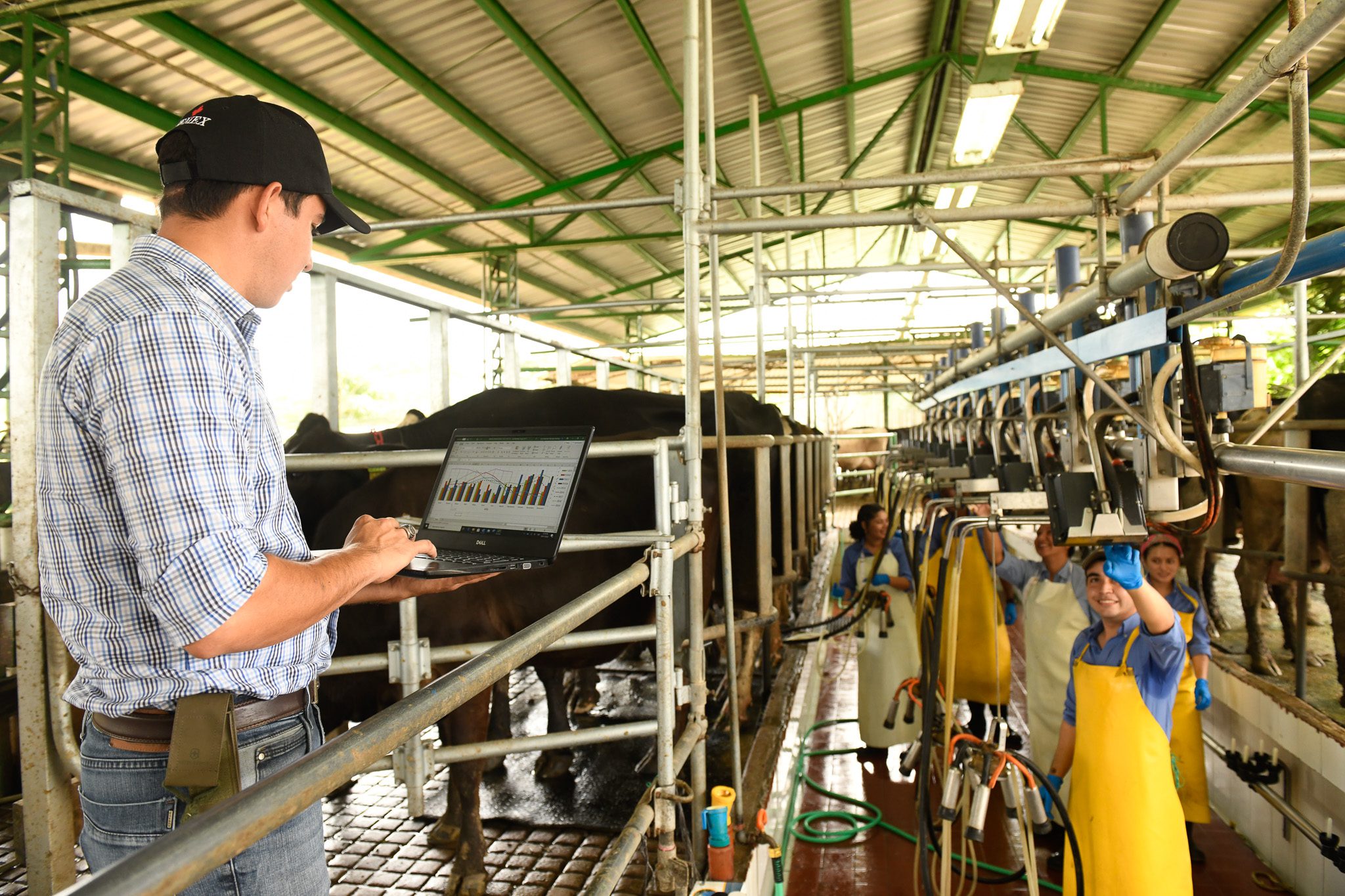
Module: Dairy Cattle
Description and general objective of the module:
This module is alearning space where studentsThey carry out activities that include the correct implementation of the mechanized milking routine, evaluation of the body condition of dairy cows in different physiological states, evaluation of the total mixed ration. Besides,carrycarry out drying practices for dairy cows, dairy farming (cattle herding) and application of medicines through different means.
At the end of the module, the student will be able to apply dairy cattle management techniques in the tropics, considering work contexts based on the production method and control mechanisms in the dairy production area of a specialized herd. de control en el área de producción lechera de un hato especializado.
- Carry out mechanized milking practices applying the hygiene and safety protocol, which guarantees the quality of the milk in efficient milking.
- Apply treatments for the main pathologies that affect the health of cows and ensure the health of the cows reflected in the body condition.
- Analyze the feeding system by evaluating the total mixed ration and estimates of biomass in pastures for the correct nutrition of the dairy cow.
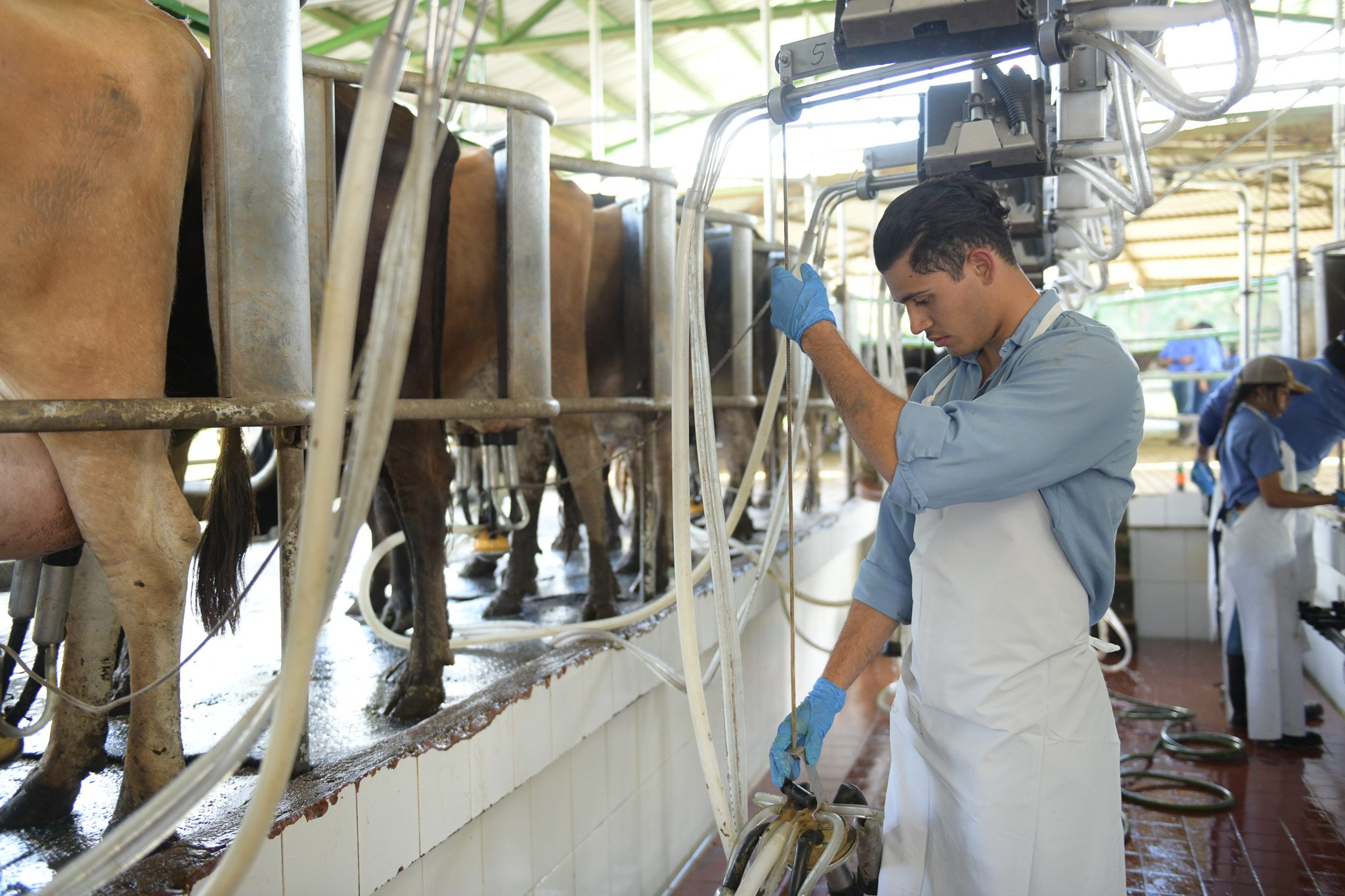
Module: Comercialization
Description and general objective of the module:
In the marketing module, students acquire and put into practice knowledge about the management and control of the operations of a retail sales position. They engage in activities such as category management, customer service, point-of-sale and channel marketing, inventory management, quality control, and relationships with business partners; this allows them to develop business skills through continuous contact with the different links of the value chain to which they have been exposed throughout all the Learning by Doing modules.
At the end of the module, the student will be able to apply techniques and tools for operating a retail purchasing and selling business, identifying sales opportunities, through the use of information as a tool for decision making, for customer service, importance of image, location and display of the product, and other marketing activities.
- Describe the marketing process in a retail buying and selling business.
- Analyze historical sales information identifying its usefulness in decision making.
- Apply concepts involved in managing and operating a retail purchasing and selling business.
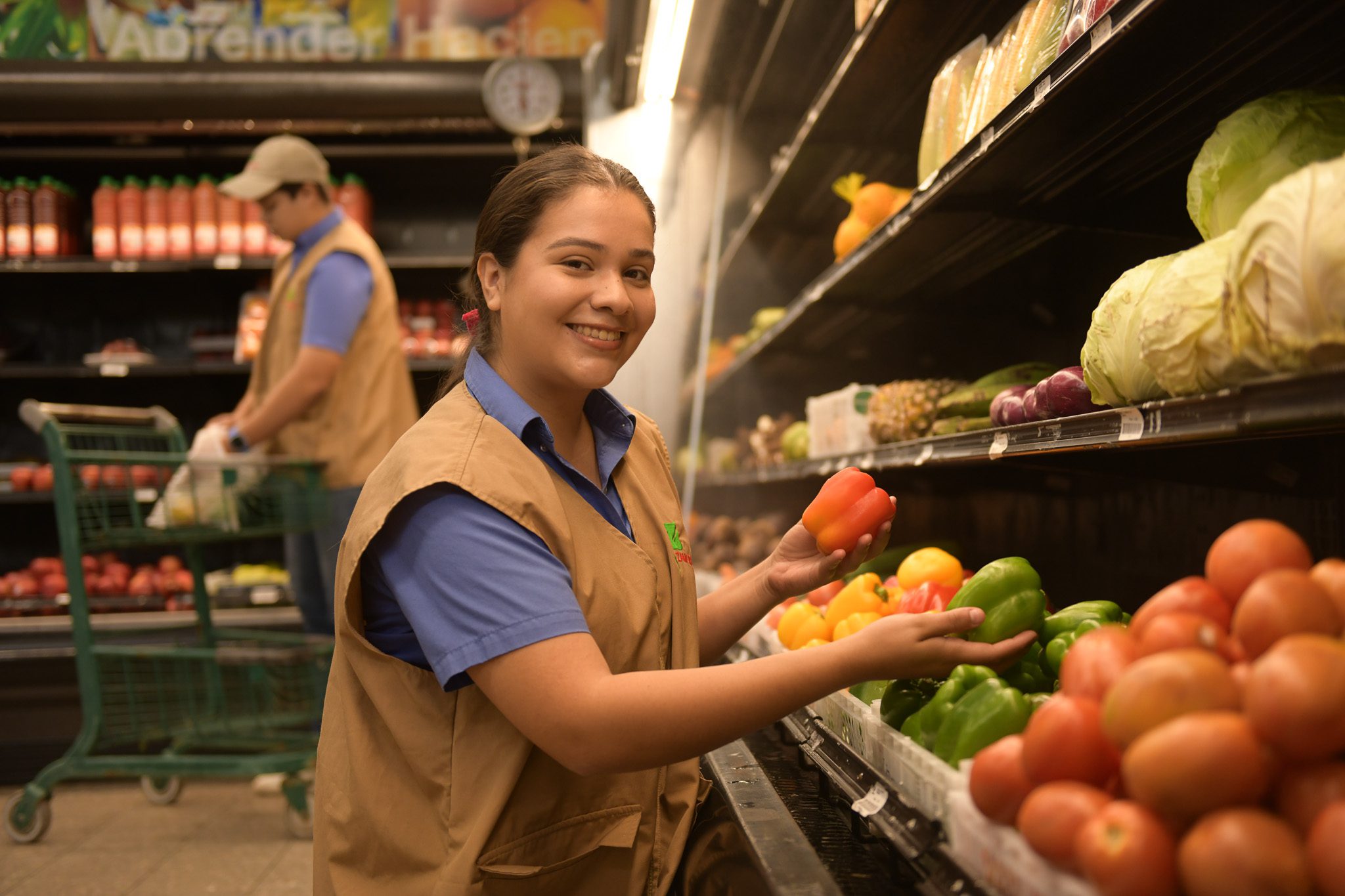
Module: Aquaculture
Description and general objective of the module:
The aquaculture module offers students the opportunity to understand the panorama of aquaculture and tilapia production, its magnitude and diversity of production both in Latin America and worldwide by carrying out different activities such as: egg harvest, feeding, sexing, sampling, partial or total harvests of fattening fish, slaughter and distribution or sale to the general public. Additionally, students carry out different practices that allow them to strengthen their capacities and abilities to work as a team and develop critical thinking.
At the end of the module, students will be able to carry out basic practices in tilapia production and apply basic production concepts in an aquaculture farm.
- Interpret the global and Latin American panorama of aquaculture considering the problems of risk management and climate change and its applicability in sustainable agriculture.
- Manage basic practices in tilapia production: sampling, egg collection, sexing, feeding, cy alidad cy alityof water to contribute to food security.
- Use basic concepts of production and planning in an aquaculture farm to achieve the economic sustainability of the business.
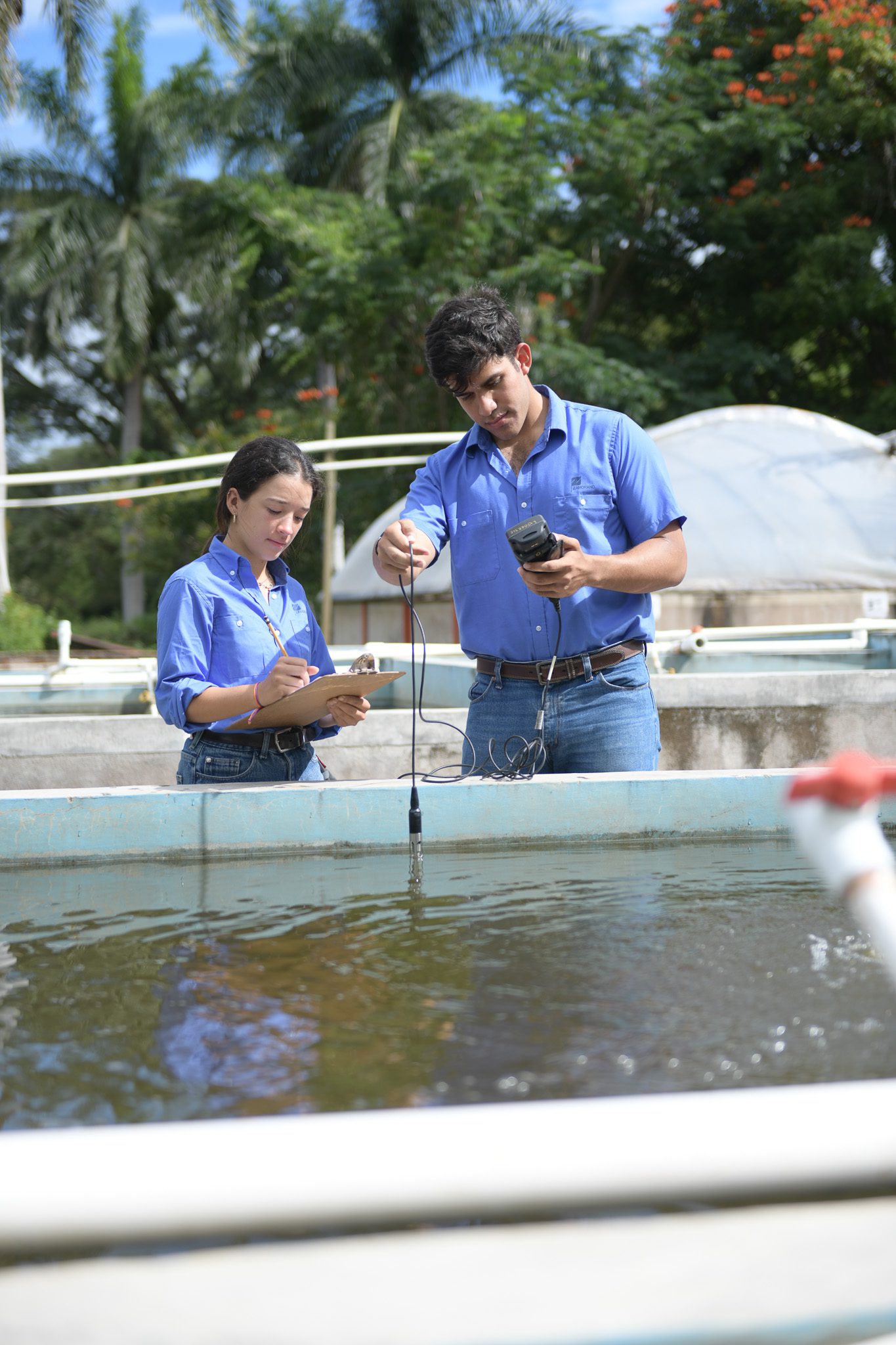
Module: Dairy Plant
Description and general objective of the module:
In the module, students have the opportunity to do internships where they apply theoretical knowledge of the processes of a dairy plant. Students carry out activities in different work sections within the unit, which include the manufacturing of dairy products, product dispatch and the development of quality analysis practices in the laboratory for the development of technical skills.
At the end of the module, students will be able to understand the importance of processing and how the link generates added value to the raw materials obtained in the milk value chain, keeping in mind the quality and safety that the products must have.
- Explain the characteristics of dairy products and the stages of the raw material transformation process to produce said products.
- Identify the main parameters for evaluating raw milk and the methods that can be used to evaluate these parameters.
- Solve basic milk standardization problems.
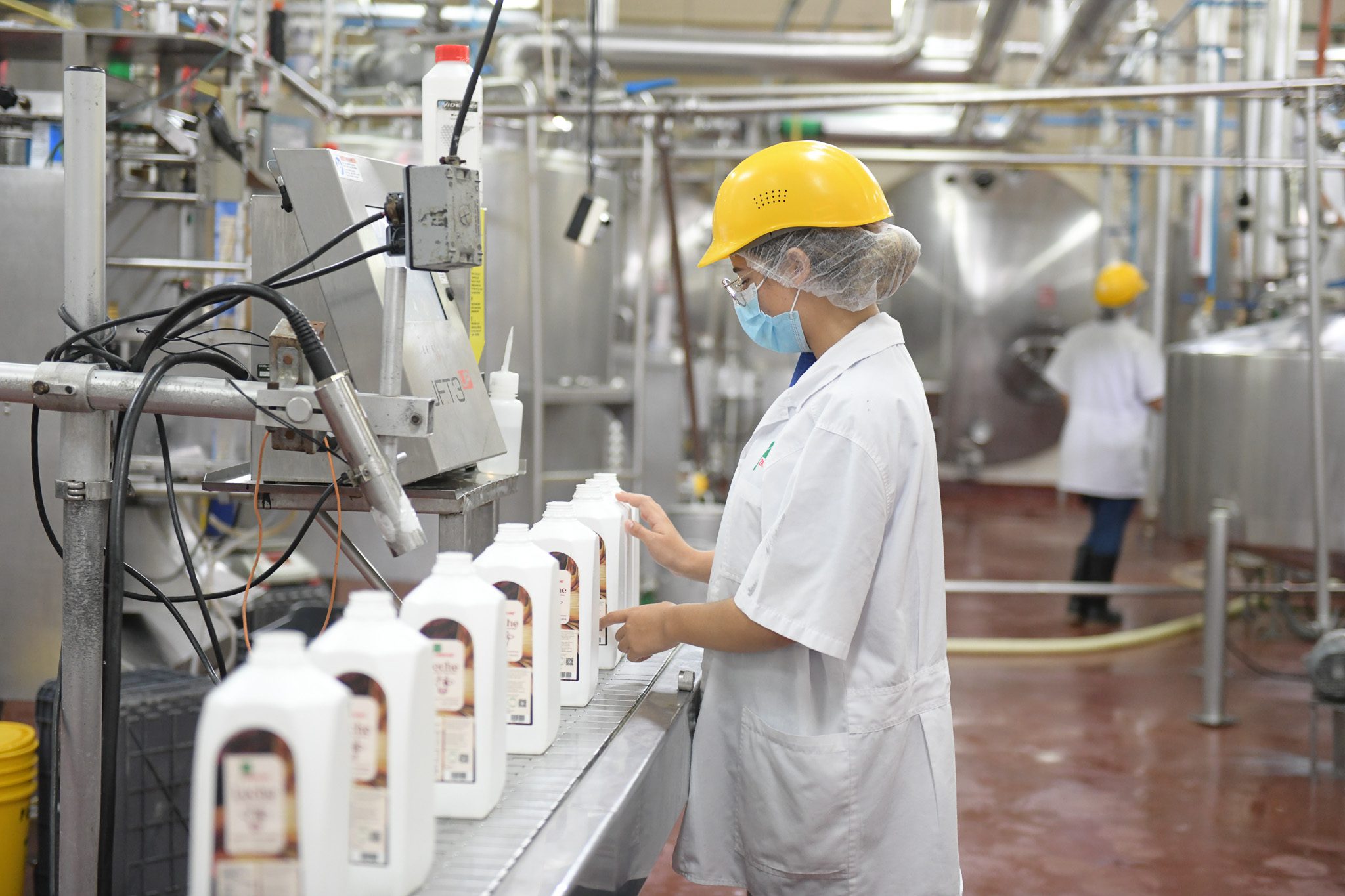
Module: Meat Plant
Description and general objective of the module:
The module has different teaching-learning spaces that allow students to carry out activities of harvesting, trimming, production, packaging and dispatch of meat products. through these activities, students understand the different process flows that occur in the processing of meat. fresh and processed meats, as well as the execution of Occupational Hygiene and Safety programs, Standardized Sanitation Operational Procedures, Good Manufacturing Practices, safety and quality used in the plant.
Upon completion of the module, students will be able to understand meat production processes through the application of harvesting, trimming and processing techniques for cattle and pigs, with a focus on quality and safety control, in order to guarantee the obtaining of meat suitable for human consumption.
- Apply the harvesting processes of cattle and pigs and their need for quality and safety control to produce carcasses suitable for human consumption and discuss the biochemical transformation from muscle to meat to ensure product quality and safety processes.
- Apply the deboning processes of cattle and pigs, valuing the areas of the channel based on the quality of the meat and consumer preferences, managing to formulate brines and improvement processes for fresh meat to improve the quality of the product offered to the consumer.
- Apply processing methods for various meat products, exposing process parameters and explaining safety programs and critical process control points; calculating variable costs in the meat industry and establishing market prices.
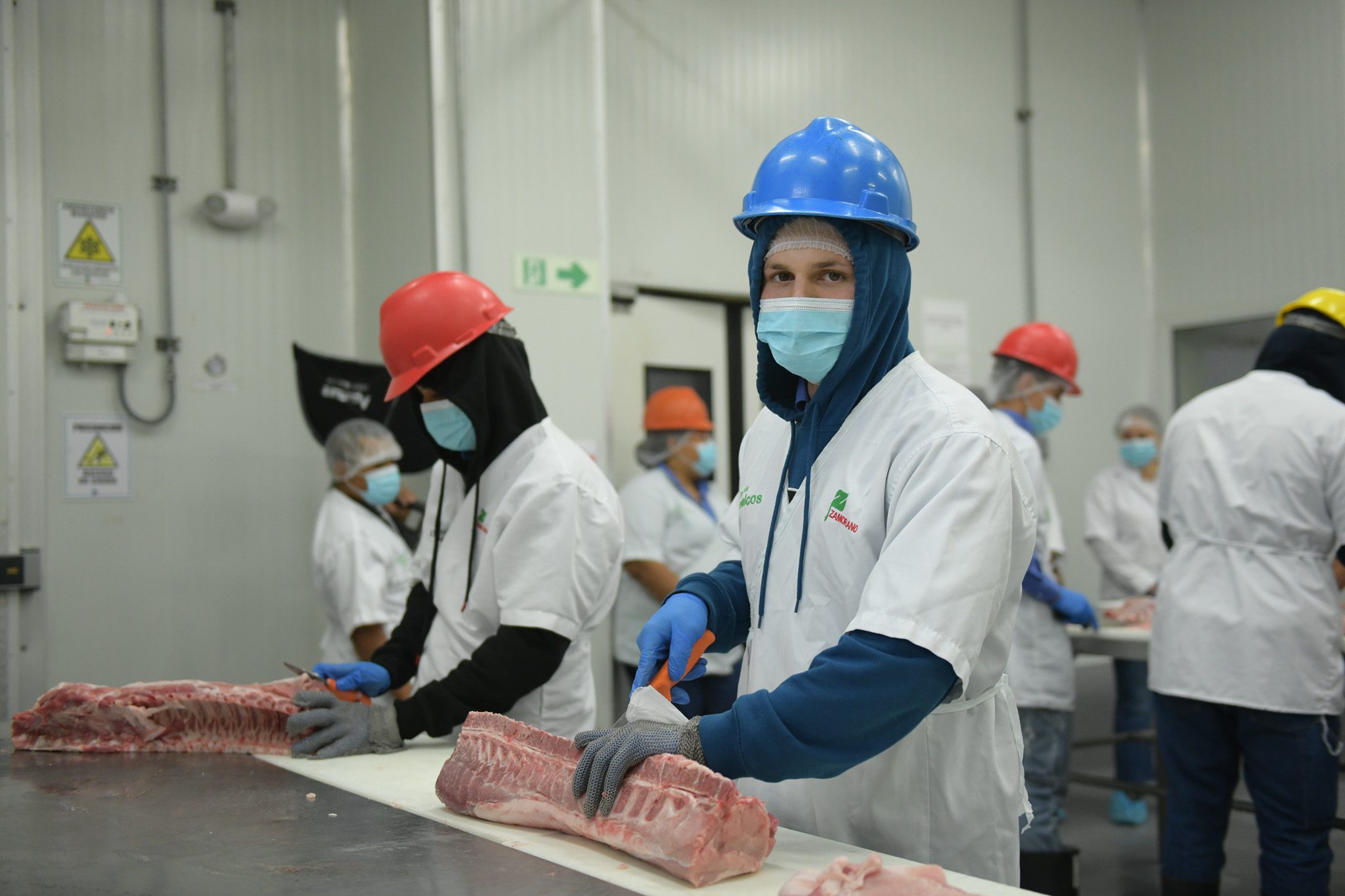
Module: Added Value of the Wood
Description and general objective of the module:
The module offers the student the opportunity to develop skills in the use of machinery and equipment for the transformation of timber and non-timber products in order to obtain maximum profitability from a forestry activity. Through the practices developed, students will learn the correct functioning of the tools used in wood value-added processes, applying safety measures, design and construction of a wooden piece of furniture, following the processes ranging from the selection of the wood until the final assembly taking into consideration the maximization of the resource.
At the end of the module, the student will be able to plan and carry out the main activities to optimize the use of raw materials and tools in the transformation and generation of added value of forest products.
- Execute the main wood transformation processes, with the aim of providing the greatest added value, maximizing the profits of a forestry company.
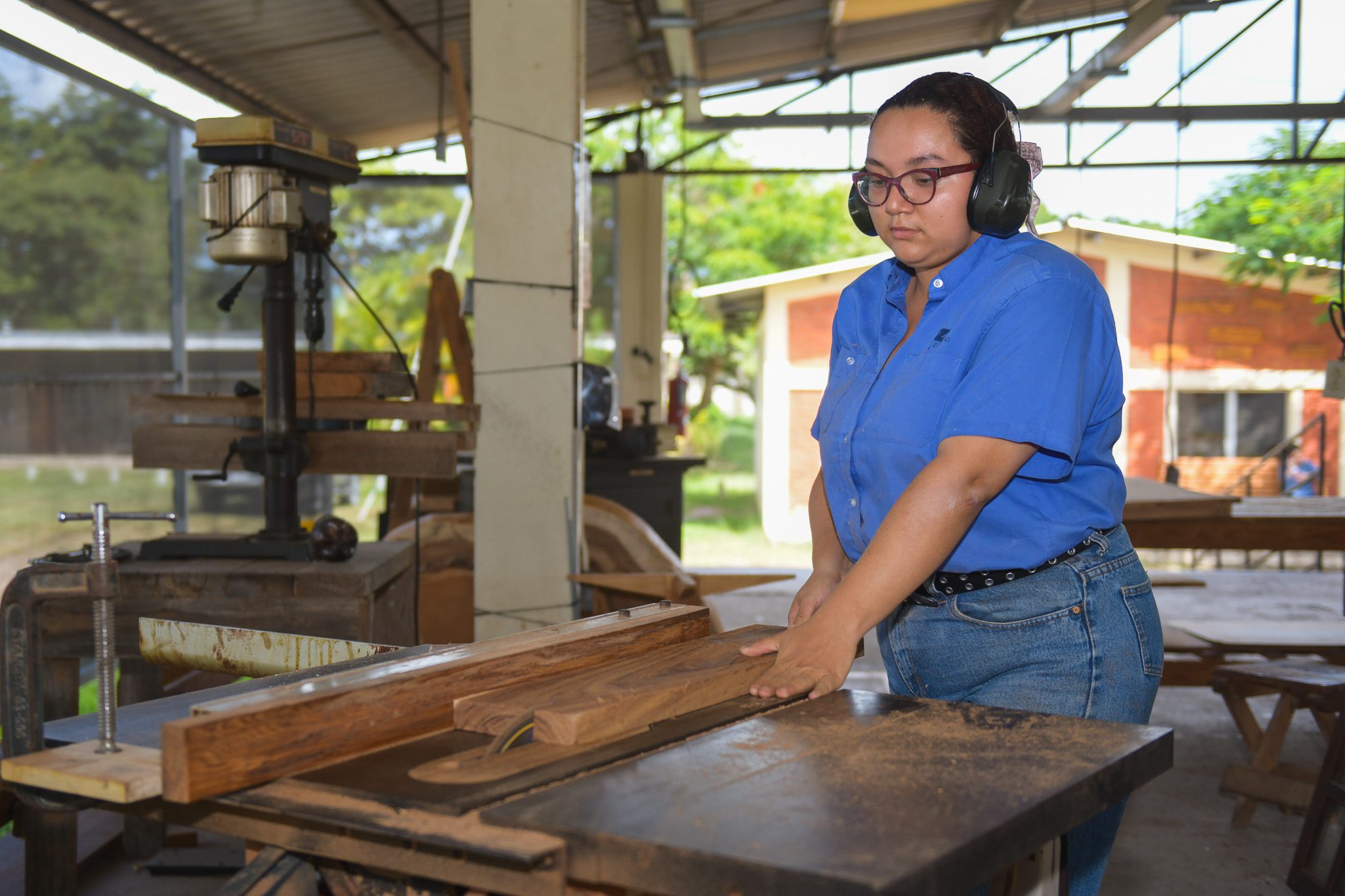
Module: Digital Marketing
Description and general objective of the module:
In the module, students will learn to use different platforms for managing social networks, designing and managing email marketing campaigns, and creating a professional website . Students will develop strategic planning skills with a focus on digital marketing through the design of a digital marketing plan. The module includes the development of activities that start from the ideation of an entrepreneurial project to its advertising and promotion in the different duly optimized digital channels, to lay the fundamental foundations for the branding of the project.
At the end of the module, students will be able to develop and implement comprehensive digital marketing strategies, based on the identification of the needs of a company and its target audience, in order to execute effective campaigns using specialized tools such as social media marketing.
- Identify the needs of the company and its potential audience to develop digital marketing strategies and tactics.
- Execute marketing campaigns using specific marketing tools such as social media marketing.
- Design a basic digital marketing plan.
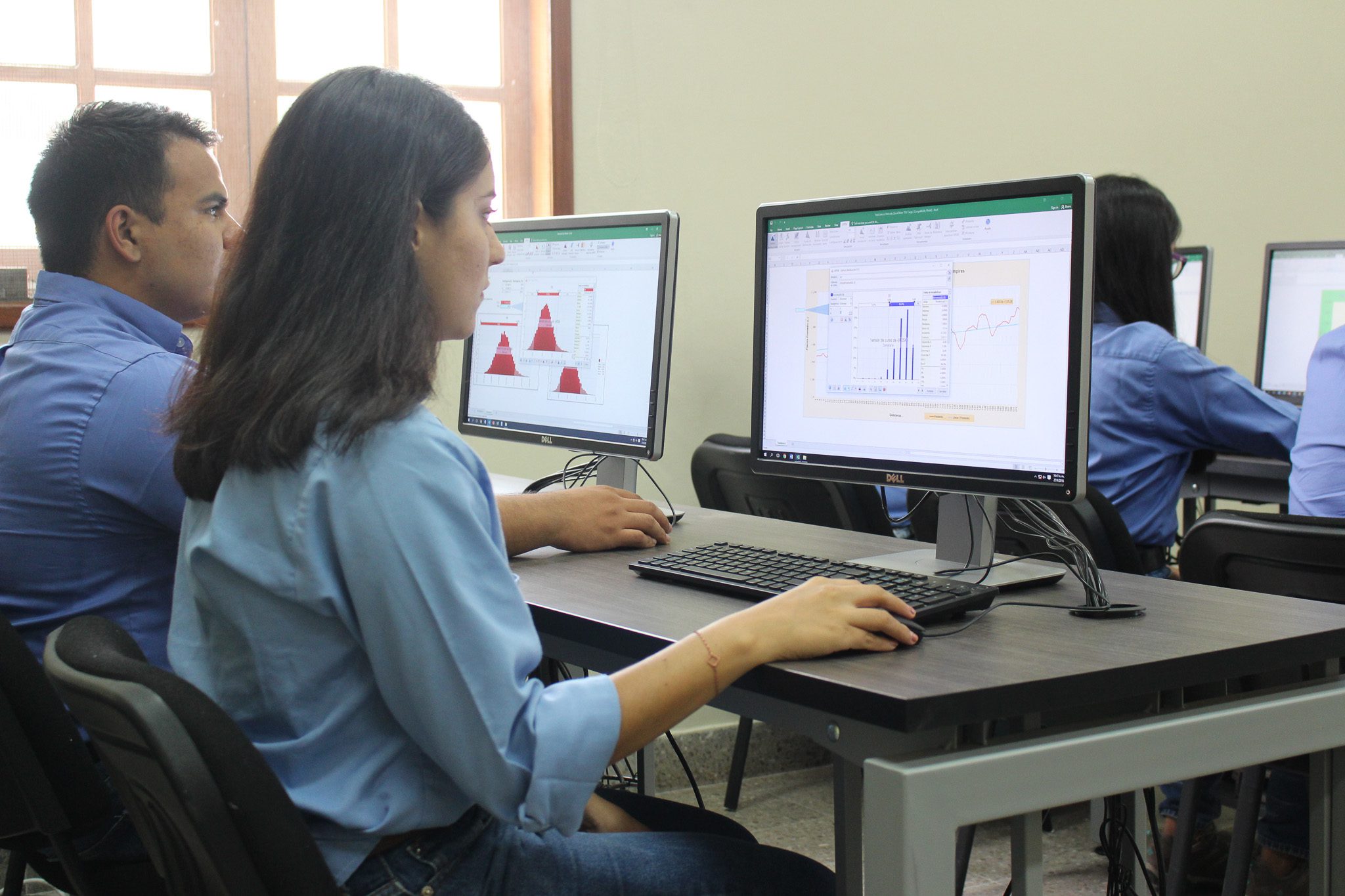
Module: Precision Agriculture
Description and general objective of the module:
In the module, students will receivethe basic knowledge of tinformation, communication and analysis technologies in agricultural production, to improve productivity and sustainability, taking into consideration the present variabilityof theterrain in the management of soils and crops. The module offers the student the opportunity to apply the knowledge built in various courses throughthegeneration of proposals for the management and operation of resources based on data analysis, to achieve the optimization of productive capacity.
At the end of the module, students will be able to understand how information on soils, climate, plants and other biotic and abiotic factors that affect production is generated and analyzed to make immediate and precise decisions.
Also, they will be able to recognize the equipment and sensors necessary to generate information and computer programs that transform the information into useful data for decision making and the execution of differential activities according to the variable condition of the area under study, to ensure productivity and sustainability of agricultural systems.
- Apply data capture and collection techniques linked to agricultural production to optimize the use of resources considering the principles of bioethics and sustainability.
- Analyze data linked to agricultural production and resource management to contribute to knowledge, organization and decision making.
- Generate proposals for the management and operation of resources based on the analysis of data for efficiency in the use of resources and optimization of productive capacity.

Module: Pig Cattle
Description and general objective of the module:
In the Pig Livestock module, students apply pig production techniques, through the development of skills in animal management, nutrition, health and reproduction, under intensive pig exploitation systems. The module offers, through practical experience, the opportunity to develop analysis and interpretation skills and to perform in the different roles of the processes involved in a pig production system.
At the end of the module, the student will be able to carry out pig farm management practices following procedures and safety measures to achieve better production parameters.
- Carry out piglet management practices at birth and identify the physical and productive differences of the breeds of pigs found on the farm following the procedures and safety measures established to achieve better productive parameters.
- Perform surgical castration practices on pigs using established procedures and safety measures to ensure meat quality of pigs sent to harvest.
- Supervise the natural mating process following established procedures and safety measures to achieve high reproductive rates on the pig farm.
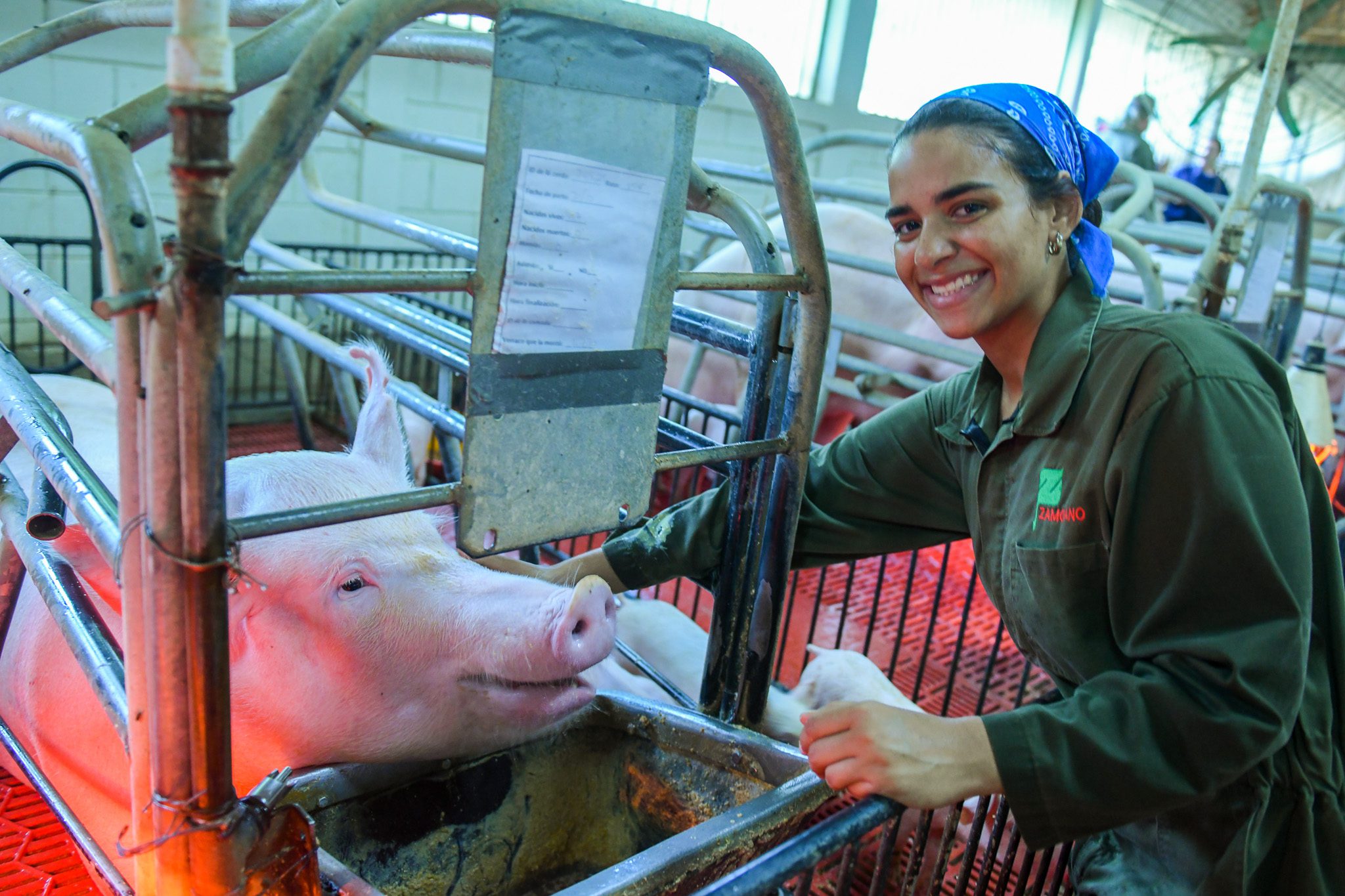
See all modules
- Contact an admissions counselor
- Register and create your applicant profile
- Complete the online admissions test
